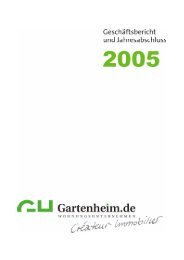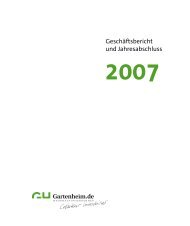analysis of the influences of solar radiation and façade glazing ...
analysis of the influences of solar radiation and façade glazing ...
analysis of the influences of solar radiation and façade glazing ...
You also want an ePaper? Increase the reach of your titles
YUMPU automatically turns print PDFs into web optimized ePapers that Google loves.
References 110<br />
Treeck, C. <strong>and</strong> Rank, E. 2007. Dimensional reduction <strong>of</strong> 3D building models using graph<br />
<strong>the</strong>ory<strong>and</strong> its application in building energy simulation. 2007. Engineering with<br />
Computers 23: 109–122.<br />
Walton, G.N. 1978. The Application <strong>of</strong> Homogeneous Coordinates to Shadowing<br />
Calculations. 1978. American Society <strong>of</strong> Heating Refrigeration <strong>and</strong> Air-Conditioning<br />
Engineers, ASHRAE Transactions, Vol 84, Part I.<br />
Walton, G.N. 1983. The Thermal Analysis Research Program Reference Manual Program<br />
(TARP). 1983. National Bureau <strong>of</strong> St<strong>and</strong>ards.<br />
Wang, Y., Huang, Z. <strong>and</strong> Heng, L. 2007. Cost-effectiveness assessment <strong>of</strong> insulated<br />
exterior walls <strong>of</strong> residential buildings in cold climate. 2007. International Journal <strong>of</strong><br />
Project Management 25: 143–149.<br />
Wetter, M. 2005. BuildOpt – a new building energy simulation program that is built on<br />
smooth models. 2005. Building <strong>and</strong> Environment 40: 1085–1092.<br />
Wienerberger. 2008. Technisches Datenblatt POROTON-T9. s.l. : The Wienerberger<br />
Group, 2008.<br />
Wright, J.A., Loosemore, H.A. <strong>and</strong> Farmani, R. 2002. Optimization <strong>of</strong> building <strong>the</strong>rmal<br />
design <strong>and</strong> control by multi-criterion genetic algorithm. 2002. Energy <strong>and</strong> Buildings 34:<br />
959–972.<br />
Wurtz, E., Mora, L. <strong>and</strong> Inard, C. 2006. An equation-based simulation environment to<br />
investigate fast building simulation. 2006. Building <strong>and</strong> Environment 41: 1571–1583.<br />
Xu, X. <strong>and</strong> Wang, S. 2007. Optimal simplified <strong>the</strong>rmal models <strong>of</strong> building envelope based<br />
on frequency domain regression using genetic algorithm. 2007. Energy <strong>and</strong> Buildings 39:<br />
525–536.<br />
Yan, D., et al. 2008. An integrated modelling tool for simultaneous <strong>analysis</strong> <strong>of</strong> <strong>the</strong>rmal<br />
performance <strong>and</strong> indoor air quality in buildings. 2008. Building <strong>and</strong> Environment 43:<br />
287–293.<br />
Yezioro, A., Dong, B. <strong>and</strong> Leite, F. 2008. An applied artificial intelligence approach<br />
towards assessing building performance simulation tools. 2008. Energy <strong>and</strong> Buildings 40:<br />
612–620.<br />
Yohanis, Y.G. <strong>and</strong> Norton, B. 2000. A comparison <strong>of</strong> <strong>the</strong> <strong>analysis</strong> <strong>of</strong> <strong>the</strong> useful net <strong>solar</strong><br />
gain for space heating, zone-by-zone <strong>and</strong> for a whole-building. 2000. Renewable Energy<br />
19: 435–442.<br />
Yohanis, Y.G. <strong>and</strong> Norton, B. 2002. Useful <strong>solar</strong> heat gains in multi-zone non-domestic<br />
buildings as a function <strong>of</strong> orientation <strong>and</strong> <strong>the</strong>rmal time constant. 2002. Renewable Energy<br />
27: 87–95.





